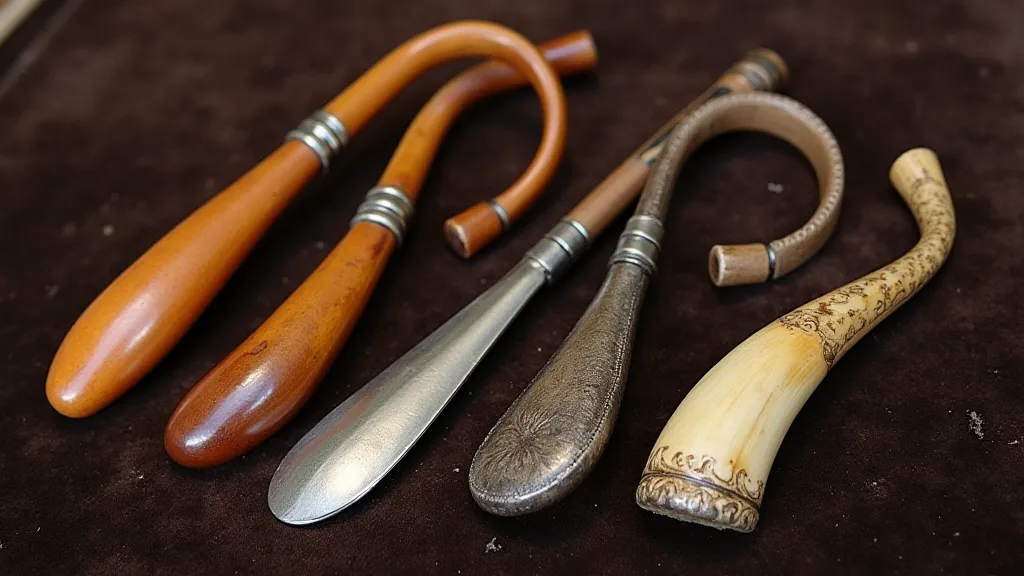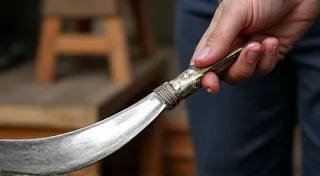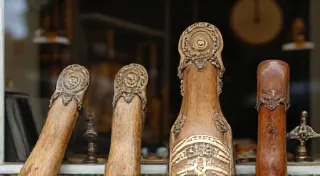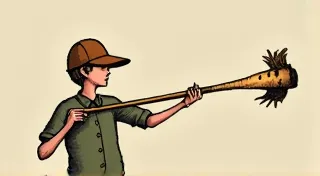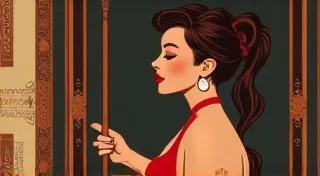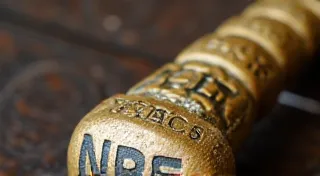The Influence of Art Deco on Shoehorn Design
Shoehorns, often overlooked as mere utilitarian objects, offer a fascinating window into the design trends of their era. While their primary function remains assisting in the graceful insertion of a foot into footwear, the objects themselves can be beautiful works of art, reflecting the stylistic sensibilities of their time. The Art Deco movement, dominating the 1920s and 1930s, left an undeniable and sophisticated mark on vintage shoehorn design, transforming them from simple tools into collectible accessories imbued with elegance and flair.
Understanding Art Deco: A Brief Overview
Born in the aftermath of World War I, Art Deco represented a move away from the flowing, organic forms of Art Nouveau. It was a movement celebrating modernity, technology, and progress. Inspired by ancient Egyptian art, Mayan architecture, and the burgeoning industrial age, Art Deco embraced geometric shapes, symmetrical compositions, luxurious materials, and a sense of streamlined elegance. The movement was prevalent in architecture, interior design, furniture, fashion, and, crucially for our purpose, decorative objects like shoehorns.
The economic boom of the Roaring Twenties fueled the demand for stylish goods. People were eager to embrace the new, and Art Deco provided a visual language that expressed this desire for sophistication and modernity. This created a fertile ground for artists and manufacturers to incorporate Art Deco principles into everyday objects, including the humble shoehorn. The shift away from mass-produced, purely functional items towards beautifully crafted pieces also highlighted the rising importance of demonstrating a certain level of refinement; as discussed in a separate article, shoehorns and social class were often a clear indicator of one's place within the social hierarchy.
The Key Art Deco Design Elements in Shoehorns
The influence of Art Deco on vintage shoehorn design is easily discernible in several key characteristics:
- Geometric Shapes: The hallmark of Art Deco is the prevalence of geometric patterns. Vintage shoehorns from this period frequently feature repeating triangles, chevrons, stepped patterns reminiscent of ziggurats, and stylized sunburst motifs. These shapes are not just decorative; they contribute to the overall sense of structured elegance.
- Sleek, Streamlined Forms: The 'streamline moderne' aesthetic, a sub-branch of Art Deco emphasizing aerodynamic forms, significantly impacted shoehorn design. Shoehorns became elongated, smooth, and often tapering towards the tip. The focus was on reducing visual clutter and conveying a sense of speed and efficiency, even though the shoehorn itself remained a stationary object. The various designs throughout the era show a spectrum of craftsmanship; a closer look at shoehorn styles reveals a range from simple and understated to ornate and extravagant.
- Exotic Materials: Art Deco luxury often involved the use of exotic and high-quality materials. Shoehorns from the Art Deco era might be crafted from materials like Bakelite (an early plastic), ivory, horn, mother-of-pearl, sterling silver, and even inlaid with semi-precious stones. The choice of materials elevated the shoehorn from a functional item to a desirable object of beauty.
- Stylized Motifs: While geometric shapes dominated, stylized representations of natural elements were also common. Think of a simplified peacock feather design, a stylized floral motif, or a depiction of a leaping gazelle—all rendered with the characteristic clean lines and symmetry of Art Deco.
- Inlay and Decoration: Many Art Deco shoehorns featured intricate inlay work. This could involve mother-of-pearl contrasting with dark horn or Bakelite, or silver inlays highlighting geometric patterns. The level of detail and craftsmanship often reflected the luxury associated with the Art Deco period.
Materials: Bakelite, Silver, and Beyond
The choice of materials played a crucial role in the aesthetic and value of Art Deco shoehorns. Let's examine some of the most common materials:
- Bakelite: This early plastic, known for its rich colors and durability, was a popular choice for mass-produced Art Deco shoehorns. Its ability to be molded into complex shapes allowed for a wide range of designs, and its affordability made it accessible to a broader market. The practicality and ease of manufacture meant that various telescopic designs became popular; details of these innovations can be found in an article detailing the rise and fall of the telescopic shoehorn.
- Silver: Sterling silver shoehorns, often hallmarked, represented the higher end of the market. They were often elaborately decorated with engraved patterns or chased designs, reflecting the craftsmanship of skilled silversmiths.
- Ivory & Horn: These natural materials were prized for their warmth and tactile appeal. They were frequently used for the handles of shoehorns, often carved with Art Deco motifs.
- Mother-of-Pearl: The iridescent sheen of mother-of-pearl made it ideal for inlay work, adding a touch of opulence to the shoehorn's surface.
When collecting vintage shoehorns, knowing how to identify Art Deco examples is essential. Here are a few things to look for:
- Geometric Patterns: The most obvious indicator is the presence of repeating geometric shapes like triangles, chevrons, and stepped patterns.
- Streamlined Form: Look for elongated, tapered shapes that convey a sense of sleekness and efficiency.
- Material Quality: Examine the quality of the materials used. Bakelite shoehorns may show signs of aging (craze lines), while silver shoehorns should be hallmarked.
- Craftsmanship: Pay attention to the level of detail and craftsmanship. Art Deco shoehorns were often meticulously crafted, reflecting the emphasis on quality and elegance.
- Originality: Examine the shoehorn for any signs of damage or restoration. Originality is a key factor in determining value.
The Legacy of Art Deco in Shoehorn Collecting
The influence of Art Deco on shoehorn design remains significant today. Art Deco shoehorns are highly sought after by collectors due to their beauty, craftsmanship, and historical significance. They represent a unique intersection of functionality and artistic expression, offering a glimpse into the elegance and optimism of the Roaring Twenties and beyond. Furthermore, the meticulous nature of the work performed during this period demonstrates a focus on aesthetic considerations that extended beyond the immediate practicality of the item.
Collecting these pieces isn't just about acquiring objects; it’s about connecting with a specific era and appreciating the design principles that shaped it. The Art Deco shoehorn serves as a tangible reminder of a time when even the most utilitarian objects were imbued with beauty and style.
Beyond the Decade: Art Deco's Enduring Influence
While the height of Art Deco was in the 1920s and 1930s, its influence extended beyond that period. Designers continued to incorporate Art Deco elements into their work throughout the 1940s and even into the 1950s. This means that while the most quintessential examples are from the peak years, there are still many beautiful shoehorns that showcase Art Deco sensibilities. The enduring qualities of the design, with its clear lines and elegant proportions, ensured its continued use and adaptation across various industries.
The enduring popularity of Art Deco demonstrates the timeless appeal of its design principles. By appreciating the subtle details of these vintage shoehorns, collectors can uncover a fascinating story of design, craftsmanship, and the pursuit of elegance. The appeal extends beyond mere aesthetics; it represents a return to a period of optimism and progress, a sentiment that resonates even today. The understanding of the materials used and the design choices made during this era contributes significantly to the appreciation of these objects, and highlights the intersection of art and functionality. Examining similar examples from this period, such as furniture and architecture, reinforces the consistent application of these design principles.
